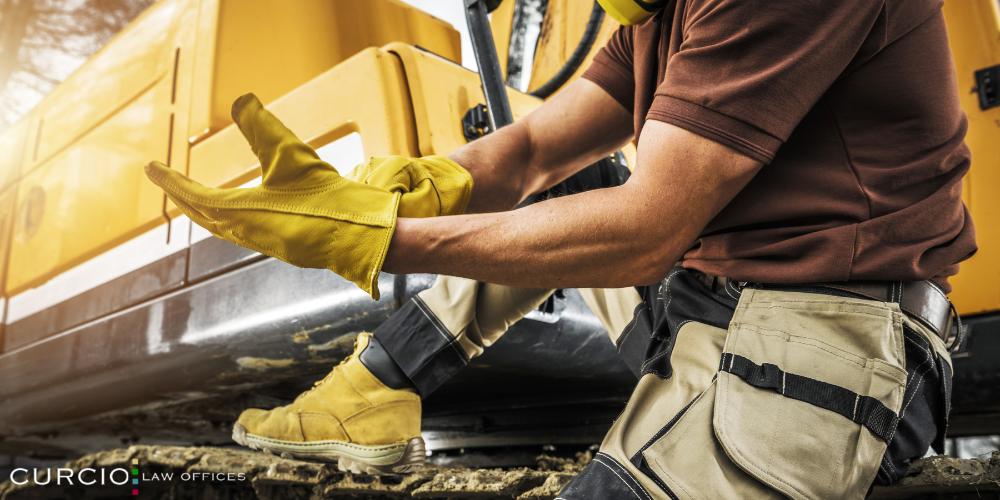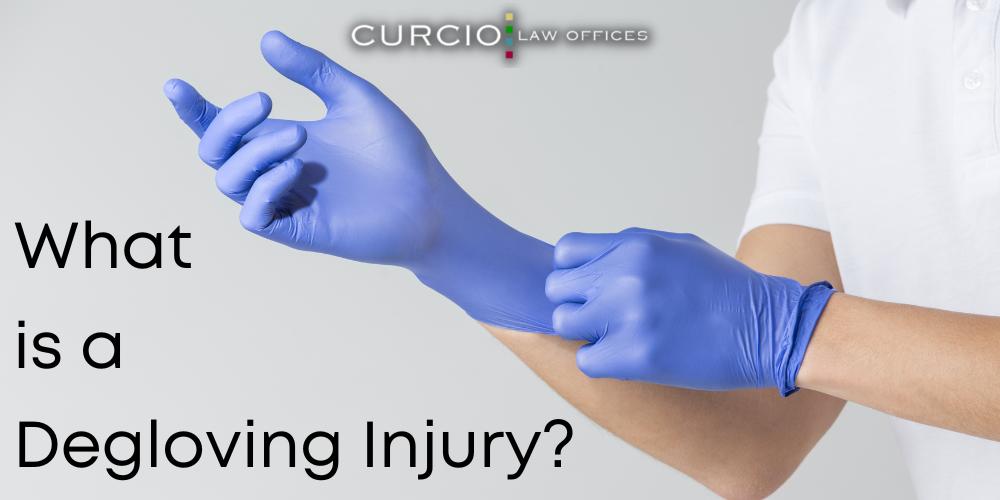Degloving injuries are pretty much what they sound like – ripping off a glove, except the “glove” is actually your skin. Degloving soft tissue injuries fall under the “catastrophic injury” category because they can result in major infection, tissue death, blood loss, sepsis, and even death, especially without prompt medical attention. Below, our Chicago personal injury lawyers break down the specifics of the degloving injury: what it is, how it happens, how to treat it, and whether or not you can sue for this injury.
If you or a loved one has suffered a catastrophic injury or death due to negligence, you may have grounds to file a personal injury lawsuit in Illinois. Our Chicago catastrophic injury lawyers understand the legal challenges of degloving soft tissue injuries, and we have what it takes to ensure you receive appropriate financial compensation. Call 312-321-1111 to schedule a free consultation with our legal team today.
What is a Degloving Injury?
A degloving injury, also called an avulsion injury, is an injury that involves your skin and your muscles detaching from each other. The phrase “degloving” is used here to describe the phenomenon that happens when these injuries occur. Think of peeling a glove off your hand — a degloving injury describes the peeling of skin to expose muscle or even bone.
Degloving injuries or avulsed skin can be incredibly painful, and cause severe injuries to several parts of the body. Affected tissues may need a skin graft to recover, depending on the severity of the injury. Traumatic injuries like these often pose diagnostic and therapeutic challenges in order to ensure the best healing.
Body Parts That Most Commonly Suffer Degloving Injuries
Any body part can experience a degloving injury, as our entire bodies are covered in skin. However, some of the most common areas for degloving or avulsed skin include:
- Hands;
- Feet;
- Legs;
- Arms;
- Face.
These are areas that are more exposed to severe injuries, particularly the upper and lower extremities, due to high use. Treatment options for degloving injuries will depend on the area in which they occur, as well as the type of degloving injury sustained.
Types of Degloving Injuries
There are two main types of degloving injuries: open and closed. Severe degloving injuries can come in both types, these descriptors are simply used to describe their clinical presentation.
It can be much harder to diagnose closed, internal degloving injuries because they are basically “invisible.” Whereas open degloving injuries are immediately visible.
Open Degloving Injury
As the name suggests, an open degloving injury is when the degloved skin is on the top layers of the epidermis, revealing the underlying muscle (and sometimes bone) to open air. These types of degloving injuries can come from events such as car accidents, malfunctions of industrial or farm equipment, or other incidents that pose harm to the skin surface. This is why the hands, feet, and face can be the most common areas for degloving injuries, particularly open degloving injuries.
Closed Degloving Injury
A closed degloving injury occurs when the upper skin is separated from subcutaneous tissue. This can leave a space under the skin, between the soft tissue, called a Morel-Lavallée lesion. This space can fill up with blood, fat, and other fluids, which can cause specific anatomical injuries. The clinical presentation of closed degloving injuries can be no more than a bruise, which is why many people with closed degloving injuries can have delayed diagnosis. An MRI is often needed to diagnose this kind of soft tissue degloving.

How Do Degloving Injuries Happen?
Degloving injuries are caused by trauma to the skin. Direct trauma to the outside of the skin – through car accidents, heavy machinery malfunctions, dog attacks, construction accidents, and even amusement park accidents – can cause open degloving injuries. Meanwhile, closed degloving soft tissue injuries can be caused by overexertion in sports or during other intense movements. Avulsed tissue, or a Morel-Lavallée lesion, can cause the injured body part to experience soft tissue loss, swelling, and even dead tissue, called necrosis.
The treatment of a degloving injury will depend on clinical presentation, severity, and viability of the skin tissue.
Degloving Injury Treatment Options
As mentioned, the treatment options available for a degloving injury depend on the severity of the injury, where the injury has occurred, and any existing medical complications of the patient. For example, patients who have blood supply issues, such as hemophiliacs, may experience more complications from surgeries or skin grafts.
In most cases, open degloving injuries are treated with plastic surgery using a skin graft. This is when skin is taken from another part of the body, usually lower extremities, and applied to the wound bed. Any skin flaps or avulsed skin will be removed prior to this, in order to prevent necrosis. In some cases, your body can reject a skin graft, which can complicate things for the patient and the plastic surgery team.
Closed degloving injuries are typically treated with a drainage of any fluids from a built up Morel-Lavallée lesion. Then, skin viability will be monitored, and any underlying tissue that has started to necrotize will be removed with a necrotic tissue debridement.
Long-Term Complications of a Degloving Injury
In very serious cases of degloving injuries involving necrosis, amputation may be the only treatment option. If necrotized or dead tissue isn’t removed quickly and completely, it can cause complete loss of limb, limb trauma, or life threatening conditions like gangrene. Most of these require surgical treatment to reverse.
Long-term side effects from successful skin grafts can include increased or decreased sensitivity to the area, hair loss in the area, scarring on the overlying skin, and interference with underlying tissue and limb movement.
Can You Die From Degloving Injuries?
While degloving injuries themselves are not often life threatening, the complications from these injuries, as well as complications from surgery and recovery, put people with a degloving injury at a much higher risk for infections, hemorrhaging, and trauma shock. Soft tissue injuries can be especially complicated, as internal healing can be unpredictable. These complications from degloving can all present life threatening risks if not treated quickly and properly.
Can You Sue for a Degloving Injury?
In cases where either an open or closed degloving injury was caused by another party, you can sue for damages. This could be the case if you are injured by work equipment, a car accident, or other incident in which the injury was caused by another party.
Additionally, you may be able to sue a hospital or medical clinic if a delayed diagnosis causes severe injuries. This would be grounds for a negligence case. Call a Chicago personal injury lawyer at Curcio & Casciato today if you believe this is the case with your injury.
Damages for Degloving Injuries
Damages that you may receive for a degloving injury will depend on the severity of both the physical and emotional injuries. Emotional distress from losing a limb, physical pain and suffering, loss of consortium, and loss of quality of life can be filed for under non-economic damages. Other damages – such as medical bills, lost wages, loss of earning capacity, physical therapy bills, and mental health counseling bills, can be recovered via economic damages if your case is successful. If you were injured at your workplace, then these damages may be paid out to you by worker’s compensation.
Degloved skin can be incredibly painful, as can all other soft tissue injuries. While these injuries can be traumatic, recovery is possible. Trauma patients have several resources at their disposal to help improve their recovery process as they heal, including legal action.

Call Chicago Personal Injury Lawyers at Curcio & Casciato Today
If you have suffered a degloving injury due to negligence in a car accident, dog attack, construction accident, or an amusement park accident, you may have grounds to take legal action. Degloving soft tissue injuries are just one of many catastrophic injuries that can cause years of physical, emotional, and financial distress. You deserve to be fully compensated, especially if someone else caused your injury. Call Chicago personal injury lawyers at 312-321-1111 to schedule a free consultation today.



